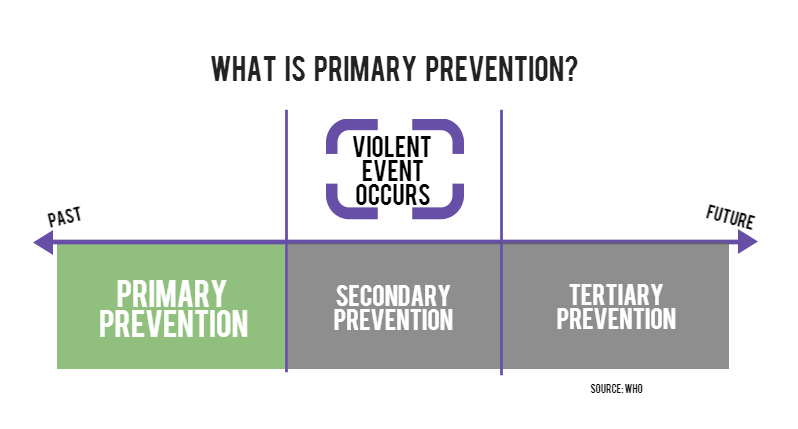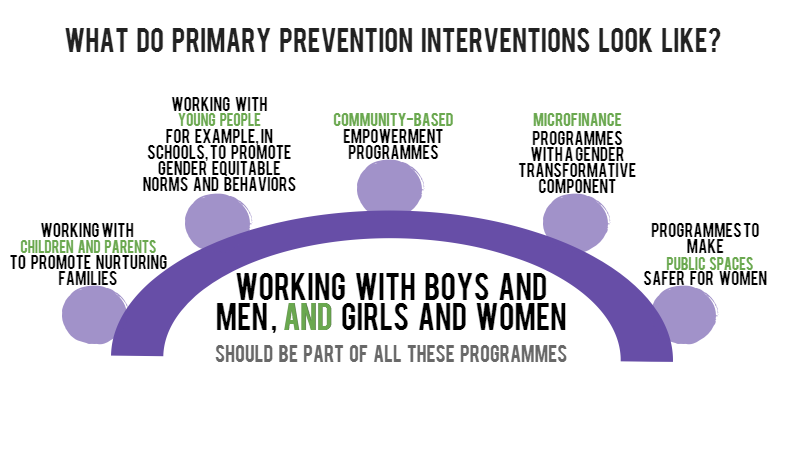What is Primary Prevention?
Primary prevention describes actions and interventions to stop violence before it starts by addressing the different factors associated with violence. These actions may augment factors that promote safety, equality, non-violence and peace, and/or influence factors that contribute to violence, such as impunity and inequality. These factors – both ‘risk’ and ‘protective’ – are embedded in policy, social norms, institutional structures, the dynamics of social relations, and individual attitudes and behaviors. In short, primary prevention is about enhancement of protective factors and reduction and mitigation of risk factors.

Ultimately, primary prevention intends to improve the social, economic and health status of women and girls, leading to the broader wellbeing of society globally.
The approach works hand-in-hand with secondary and tertiary prevention, which provides services for victims of violence, to ensure a well-rounded, robust strategy. Secondary prevention is a short-term response to existing violence, like temporary shelters. Tertiary prevention is a long-term response to former or existing violence, like law enforcement. Combined, the three prevention practices establish a systematic path to a safe and equitable future for women and girls, free of violence.

Strong policies and institutions are needed as the foundations for primary prevention. In addition, more focused, multi-component and coordinated interventions are needed at the local level. The above spectrum of potential intervention areas demonstrates how the factors associated with violence can be influenced across many sectors at the local level, and includes engagement with multiple actors and stakeholders.
